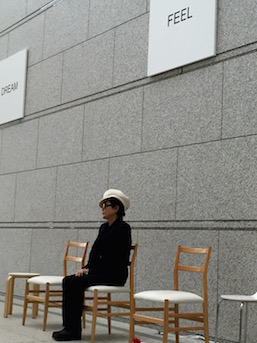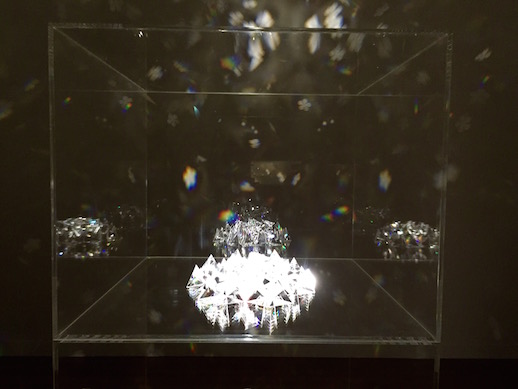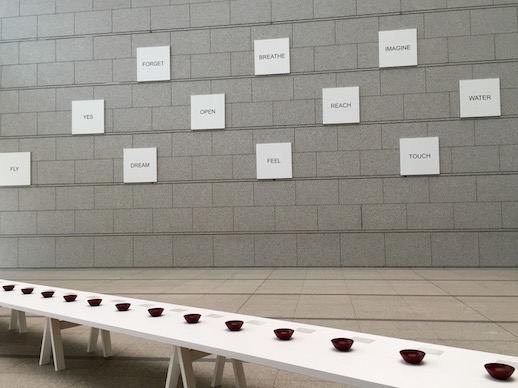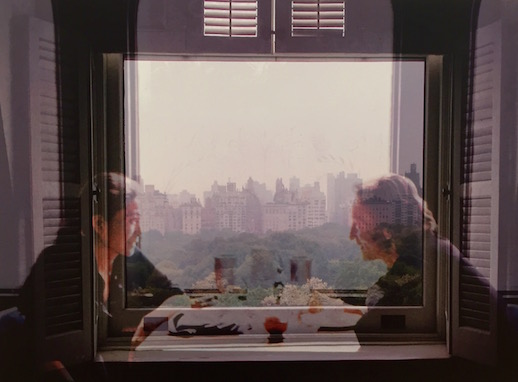Shattering Glass, Screaming at the Sky

In addition to surveying Yoko Ono’s career, “From My Window” can be approached as a kind of Conceptual Art 101. Take, for instance, her display of typed instructions to: “Scream. 1. against the wind 2. against the wall 3. against the sky.”
Many of the bewildering directives such as these come from Grapefruit, Ono’s groundbreaking 1964 book of imaginative exercises meant to shake a person out of an inhibited or conventional state of mind. In line with the tenets of conceptual art, rather than a physical object, the work here is the thought or action produced by carrying out the command.
Ono reconfirmed her commitment to the conceptual at the opening of her show, stating, “My work has always been about pure ideas. Art is not wallpaper.” Indeed, most of her creations are not pieces you could or would necessarily want to hang on your walls. Still, sometimes the theoretical and the aesthetic do merge appealingly in her work, as in Parts of a Light House, a glittering arrangement of glass prisms that form “a phantom house built of sheer light.” The realization of Ono’s “house” depends on a spectrum of intangible, mutable light, just as her conceptual pieces are built from an untold array of individual thoughts.

Ono is also true to conceptual art (or perhaps the movement has proven true to Ono) in works such as Cut Piece, a filmed 1965 performance at Carnegie Hall in which she invited the audience up on stage to snip off pieces of her clothing with scissors. This conceit echoes the “social sculpture” approach of Joseph Beuys, who asserted that all of life, humanity, and its myriad interactions can constitute forms of art.
Much of this exhibition’s draw comes from the omnipresent contrast between delicacy and force in Ono’s work, best shown in A Hole. This is a display of several glass panels shot through with a bullet that leaves behind spider webs of fractured glass in a crystallized juxtaposition of fragility and violence.
We are All Water, another work of conceptual and social creativity, simply lays out dozens of H₂0-filled bowls on a long table. Beside each is the name of a famous person ranging from from the admired to the heinous. Look into these “portraits” of the likes of Ingmar Bergman, Joseph Stalin, Georgia O’Keeffe, Billie Holiday, and Sadam Hussein, and see only your own reflection. Here the calm, neutral element of water simultaneously implicates and absolves us all in a statement both powerful and restrained.

While scaling it back at times to make room for a freedom of ideas and for others, Ono never relinquishes her own voice in all of these career-spanning works. Symbolically, on the day before “From My Window” opened, she shrieked and wailed in front of a captivated press. Her experiences living through the horrors of WWII and being a woman pulse through and magnify her vociferations, as in the especially feminist series Verticle Memory. Beneath one of these photograph of a man representing doctors who have come into her life for various reasons throughout it, she fires a charged and disquieting notion at the reader:
I saw a dark hole in a shape of an arch. I saw my body being slid into it. It looked like the arch I came out of at birth… What percentage of my life did I take it lying down? That was the last question I had in my mind.
Ono shows us that at 82, she’s still unflinchingly dedicated to making this percentage as small as humanly possible.



